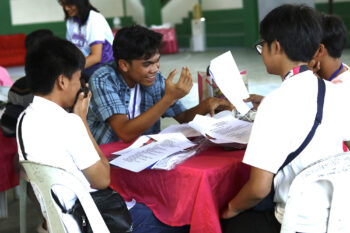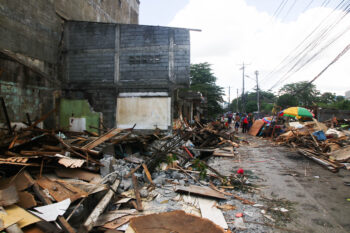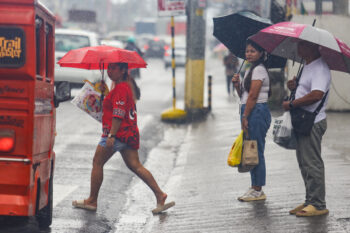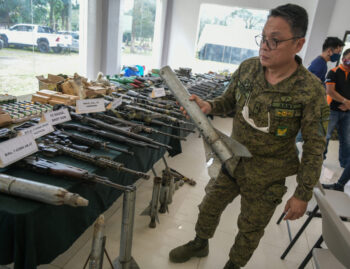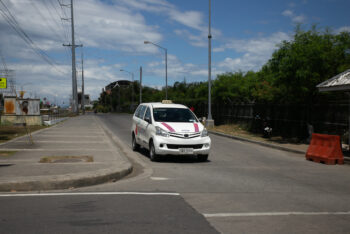1st of four parts
CAGAYAN DE ORO CITY (MindaNews / 08 July) — Of the centerpiece advocacies that President Duterte consistently articulated during the campaign, other than eradicating illegal drugs and corruption, there was his desire to draw more focus on Mindanao and break the centuries old stranglehold by Imperial Manila on our political and economic life. And, for President Duterte, a federal form of government will breathe life to this yearning.
Early on, President Duterte has said that he is inclined to introduce federalism thru a constitutional convention, and that this will take place within two years of his presidency.
As a longtime mayor of Davao City where he devoted most of his political life, he knew firsthand the neglect that governments have imposed on the provinces particularly on Mindanao.
For many years Metro Manila, and by extension the Island of Luzon, has been pampered by Presidents who come mostly from Luzon, setting their sights on how to develop the metropolis and left the development of the provinces to the local political lords. The continuing Moro problem and the proliferation of armed groups in the Southernmost Island, the Communist insurgency in the countryside, and the grinding poverty still hounding the majority, are, as most believe, directly and indirectly attributed to this official neglect.
President Duterte vows to put a stop to this skewed distribution of political and fiscal power by changing the current system of government from unitary to a federal form of government. This radical restructuring necessarily needs a constitutional change. Three presidencies since President Cory toppled Marcos in 1986 have unsuccessfully attempted to change the 1987 Constitution. The PIRMA of Ramos, the Concord of Estrada, the Sigaw ng Bayan People’s Initiative during the Arroyo presidency, all failed to change the constitution.
The lack of success in changing the Constitution has created the perception that Charter Change is a futile or a foolish exercise. In these previous attempts, several major proposals have been advanced including the change from presidential to parliamentary form of government, shift to a federal system of government, and lifting of economic restrictions, i.e. removing protectionist provisions in the constitution. Other than these substantive proposals, one more underlying issue that stood out during the debates was the manner of changing the Constitution, whether it would be thru Constitutional Convention; by constituent assembly or people’s initiative.
Is Charter Change doable under a Duterte presidency? In general, previous attempts at Cha-Cha failed because of the negative perception on the credibility of the leaders who were initiating the change. The personalities involved were scrutinized on their vested interests.
With an overwhelming mandate, there seems to be no question on the sincerity of the new president to bring about change. At this point in his administration, President Duterte, despite his crass personality, seems to exude a sincerity in his desire for genuine change. With more than 16 million voters who supported him, there is more than enough political capital to push for Charter Change process.
Although he may have alienated the powerful Catholic Bishops because of his anticlerical views, he still has the backing of major institutions including a supermajority in Congress ready to advance his legislative blueprint.
Previous attempts were also plagued by a problem in building consensus among the key forces. There was no agreement on how the change process should take place and what provisions to amend. But with a supermajority in Congress backing him and a negligible opposition to stand in his way, President Duterte may still find it easy to push for a charter change via his preferred mode of changing via Constitutional Convention.
History would attest that Charter Change thrives in the midst of pressing need or external pressure. In the time of President Ramos, there was no “revolutionary” situation or ground-breaking national crisis. Same situation obtained during the Estrada presidency. Poor Filipinos worry more about daily survival than issues like changing the Constitution. This time around it may be a little bit different. The Duterte presidency was bred and catapulted by the people’s collective anger over the status quo. An unrepressed disgust by the people over traditional politicians who continuously let them down; politicians who are all talk but lacking in action and in fact, abet instead of giving solutions to the pressing societal problems such as corruption, criminality, poverty etc. This collective anger over the state of affairs, much like the firewood that is fueling Donald Trump’s presidential run, is the “national crisis” that will draw support for Charter Change.
But then again, two years to radically restructure the government is a long time. By its very nature, Charter Change is a long and tedious process. The dynamics of support for this Presidency and Charter Change will still evolve for better or for worse. To a very large measure it will depend on how the President will handle the affairs of the state. On one hand there is his charisma and mass appeal and on the other hand there is his unorthodox and aggressive leadership style that can antagonize.
Is Constitutonal change possible? It is. But it won’t come easily given the entrenched interests. The next articles will suggest steps forward to bring us closer to a federal and hopefully (for me) a parlimanetary republic. (MindaViews is the opinion section of MindaNews. Antonio “Tony” La Viña is a human rights and environmental lawyer from Cagayan de Oro City. He was a member of the Government of the Philippines Peace Panel that negotiated with the MILF from January-June 2010. He teaches Constitutional Law at the Xavier University in Cagayan de Oro City and at the Ateneo School of Government at the Ateneo de Manila University where he used to be Dean. He can be reached at Tonylavs@gmail.com. Follow him on Facebook: tlavina@yahoo.com and on Twitter: tonylavs)

